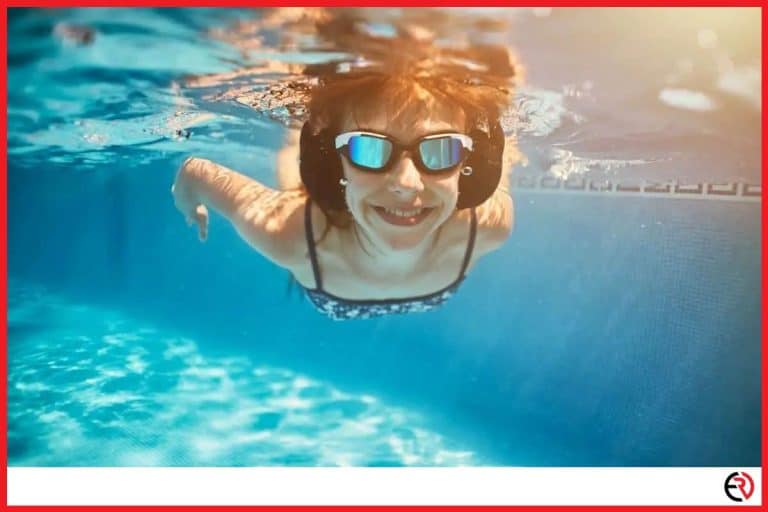Can You Wear Headphones In The Rain? (And best ways to dry)
This post may contain affiliate links which means that, if you choose to make a purchase, I may earn a small commission at no extra cost to you.
There are a lot of questions online about headphones and one of the most important ones is about whether headphones can be worn in the rain or not. In this article, we shall give full details about whether you can use a headphone in the rain/thunderstorms or not.
Can you wear headphones in the rain? It is good to know that you can actually wear a headphone in the rain. However, you will have to consider a lot of factors. Although headphones contain a little magnet in them, it is not enough to attract lightning or thunderstorms to the body of the user. Literally, it is not dangerous to use a headphone in the rain. Nevertheless, to avoid unforeseen circumstances, it is advisable not to use a headphone under the rain.
Apart from the danger that it may cause to the user, the headphone can get damaged if you constantly use it in the rain. In other words, if you use a headphone in the rain, there are higher chances of water getting into the headphone, and this is unhealthy for the headphone. It will take a lot of processes to dry up the water when it enters. Therefore, to be on the safer side, it is advisable that you do not use your headphones while it is raining.
What are the dangers of headphones in the rain?
In case you do not know, rainwater is somewhat acidic in nature. This is due to the fact that there is carbon dioxide dissolving in the rainwater. When you use a headphone in the rain, the rainwater will enter into the headphone. And if this happens, you need to dry it. It is believed that rainwater does not dissolve quickly; hence, it can take years to dissolve when it enters into a headphone, unless if the rainwater is highly acidic.
The main danger that comes with using a headphone in the rain is that it can damage your headphone. Water is not good for electronic devices. Though some headphones are water-resistant, it does not mean that it is completely waterproof. So, avoid using it in the rain to avoid the potential damage that it can cause.
You need to know that your headphones cannot catch fire in the rain or thunderstorms except if you have electrostatics on you. In the best interest, it is best advisable to use an umbrella while using a headphone in the rain.
What about thunderstorms?

Having gotten an understanding of using a headphone in the rain, it will be better to talk about using it in the thunderstorms. Although we have read about a man who got struck by lightning while he was using his headphones. However, there is something to note about his story. The lightning was believed to have struck a tree, which, in turn, sent side flash that struck his headphone. Hence, he was affected by the thunderstorms.
Literally, the headphone cannot cause any damage if it is used in the thunderstorms except only in a rare situation like the one mentioned above. This is because a flash of lightning requires a metal conductor and height for its transference. Nonetheless, the body of a human does not have a metal conductor that can attract lightning. Therefore, it is almost impossible for lightning to strike a human being, except if they have electrostatics on their body.
There is no reason why you should be a target of lightning. Normally, with the way the headphones are built, the chances of been struck by lightning while using a headphone are the same as not using a headphone in the rain. Although the headphone contains a magnet that can also attract lightning, the contents of the magnet in a headphone are too small to have any significant impact.
What to do if your headphones got wet?
As said earlier, rainwater can cause damage to the headphone if it enters. Apart from the rain, it is possible that your headphone might fall into the water. Therefore, in such a situation, what will you do? The good news is that you can fix your headphone if it gets wet. All you need to do is to take these simple steps;
- Use a soft towel to dry the headphone thoroughly
- Remove all parts that are removable to allow air dry
- Carefully shake the headphone to remove all water droplets
- Air-dry the headphone for a period of 48-hour
Note: You must not use a dryer or any hot material to speed up the drying process; allow only air to dry it. There are other methods such as using uncooked rice but the safest method is the one described above.
Are IEMs safe to use in the rain?
For the benefit of those who do not know the meaning of IEMs, it simply means in-ear monitors. Musicians, audiophiles and audio engineers make use of in-ear monitors (IEMs) for listening to their mix of vocals and stage instrumentations. In most cases, it is used for live recording studio mixing or live performance.
To answer the above question, it is not safe to use In-Ear Monitors in the rain to afford the damage it can cause to it.
IPX ratings explained
The simple meaning of IPX is international protection or ingress protection as the case may be. It is used for describing the level of protection available against water, dust, fluids, etc. There are nine (9) levels of water protection and they are;
- IPX1 – This means that the device can actually survive drops of water that fall vertically on the device for like 10 minutes. It can survive 1mm per minutes of rainfall.
- IPX2 – This shows that the device has the tendency of surviving drops of water that falls on the device if the device is tilted at a 15° angle. It can survive 3mm per minutes of rainfall.
- IPX3 – This means that the device is able to survive sprays of water.
- IPX4 – This simply means that a device in this level is able to survive splashes of water that are coming from any direction. A device in this level of water resistance can survive water more than the previous three (3) levels.
- IPX5 – Any device in this level of water resistance can survive a small water jet coming from any angle by a 6.3mm nozzle. A device at this level should be able to survive a 12.5l of water per minute.
- IPX6 – It shows that any device in this level of water resistance can survive a stronger water jet from any angle by a 12.5mm nozzle. A device at this level should be able to survive a 100l volume of water per minute.
- IPX7 – This means that any device in this level of water resistance can resist immersion in water for 30 minutes without any damage. The devices at this level are referred to as waterproof.
- IPX8 – This means that any device in this level of water resistance can survive deeper water immersion. It can last more than 30 minutes in water immersion. It is also referred to as waterproof.
- IPX9K – Any device in this level of water resistance is capable of surviving more powerful water jets. It can survive high-temperature water and more water pressure. This is the highest level of water resistance.
Headphones with high IPX ratings
- Plantronics BackBeat FIT 500

This is an on-ear type of headphone. Its Bluetooth codecs are SBC. It has a battery life of 18 hours if you are only listening to music. It is durable and also lightweight. It has a wire; hence, you can plug in the cable for more enjoyment. It is waterproof because its IPX is high.
Conclusion
You can use your headphones in the rain without any fear of damage. This is because the contents of the magnet in it are very small and it cannot attract lightning. However, it is possible that the headphone gets affected if the rainwater enters the headphone. If your headphones fall into the water or are affected by rain, just follow the simple instructions given in this article to air dry it.







